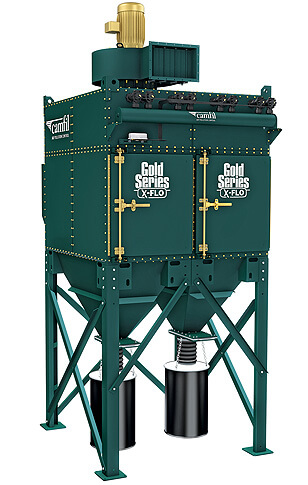A HUMAN RIGHT
At Camfil APC, we believe breathing clean air is a human right. By offering a wide range of dust, mist and fume collectors, we are able to provide clean air to the workplace, improving the health and safety of employees. In addition to improving the lives of factory workers, our products can improve the quality of local outside air, contributing to a healthier environment for our loved ones.




WANT TO DO MORE?
YOUR COMMUTE
YOUR WORKPLACE
YOUR HOME
In this day and age, we are all on the move constantly. Unfortunately, all of this running around between work, school, errands and home causes air pollution. According to the Union of Concerned Scientists, transportation contributed to more than half of the carbon monoxide and nitrogen oxide and almost a quarter of the hydrocarbons emitted into the air in 2013. These pollutants can cause lung irritation, weaken the body’s defenses against respiratory infections and even block oxygen to the brain. Luckily, there are steps we can all take to reduce this air pollution. Sharing rides and carpooling are simple ways to get to work or school as well as public transportation like buses and trains. Many businesses, including Camfil APC, are becoming bicycle friendly by providing bike racks and encouraging employees to pedal to work. Lastly, through clean vehicles and fuel technology, we are seeing reduced air pollution from cars and trucks. How can you help clean the air during your commute?
Camfil APC specializes in cleaning dust, mist and fumes from manufacturing processes. However, not only factories produce air pollution. The quality of indoor air inside offices and other workplaces is important for employee comfort and health. Poor air quality in the workplace can be tied to headaches, fatigue, trouble concentrating, and irritation of the eyes, nose, throat and lungs. These air pollutants can be caused by poor ventilation, damp environments, temperature control, asbestos, radon or recent remodeling. As an employee, you can make sure the air in your office circulates freely by keeping air vents open and asking if the building’s heating, air conditioning, and ventilation systems are being well-maintained and operated. Store food and garbage properly and do not bring in chemicals that have strong odors or could give off harmful emissions. And always let your supervisor or building maintenance know about concerns you may have.
Air pollution in your home may be the hardest to recognize because there are often no telltale signs. Do your health symptoms improve when you leave? Do they return when you come home? Mold, mildew, fuel-burning appliances, attached garages and basements where motor vehicles are stored, household chemicals and paints, air freshening devices, garbage, expired food, pesticides, and humidity can all alter indoor air quality. To improve the air in your home for your family, try keeping humidity levels under 50 percent, cleaning equipment and appliances regularly, putting away food, covering trash cans or pest control baits, and avoiding candles or air fresheners that may cover harmful odors. For more information on how to keep the air in your home safe, reach out to resources like the American Lung Association.




